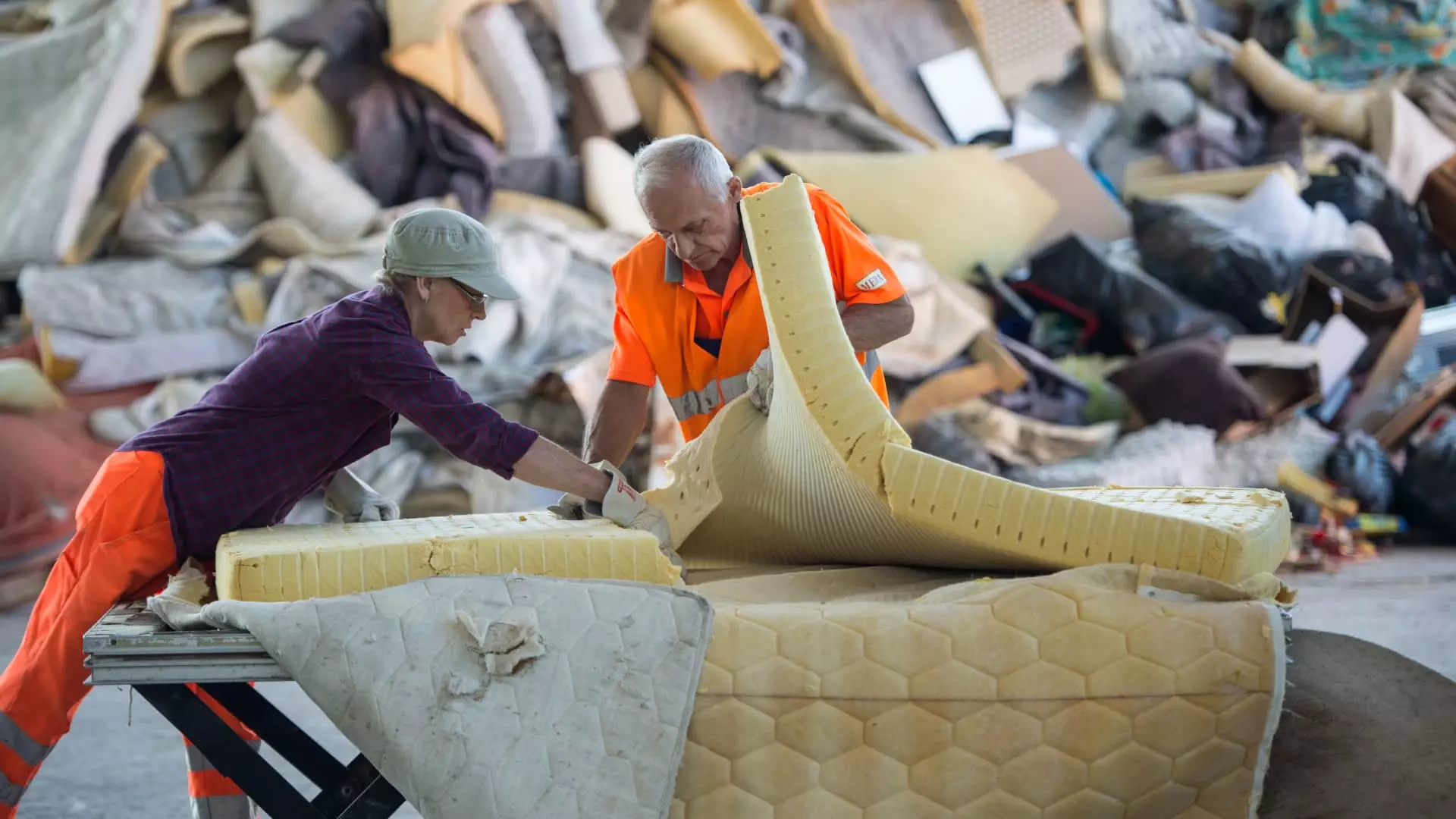The mattress industry, often overlooked in discussions about environmental impact, is undergoing a significant transformation thanks to innovative state policies aimed at sustainability. In four states—California, Connecticut, Oregon, and Rhode Island—residents are now contributing through a retail fee applied to mattress purchases. With environmental responsibility becoming a pressing issue, these initiatives not only make the mattress industry more eco-friendly but also set a precedent for other consumer goods.
The Rising Tide of Mattress Waste
In the United States, approximately 15 to 20 million mattresses end up in landfills every year, which translates to a staggering 50,000 mattresses discarded each day. While this volume of waste might not capture headlines like plastic pollution or electronic waste, mattresses contribute significantly to landfill overflows. According to the Mattress Recycling Council (MRC), over 75% of a mattress is recyclable, encompassing materials like wood, steel, foams, and fibers that possess inherent recycling potential. The challenge lies not just in recycling these items but in establishing an efficient system by which they can be reclaimed and repurposed.
The adoption of a recyclable fees scheme has emerged as a solution. States like Oregon have instituted assessments such as a $22.50 fee per unit, ensuring that the burden of recycling does not solely fall on local governments or taxpayers. By charging this fee at the point of sale, the state’s policy facilitates a more sustainable circular economy. The revenue generated goes towards operational costs of recycling facilities and public education campaigns, positioning it as a proactive rather than reactive governance model.
Extended Producer Responsibility: The Backbone of the Initiative
The core principle of these mattress recycling programs is Extended Producer Responsibility (EPR). EPR shifts the financial and logistical responsibility of product disposal from consumers and municipalities to producers and retailers. Reid Lifset, an industrial ecology expert, articulates that EPR laws ensure that producers are accountable for the lifecycle of their products once they become waste. This innovative approach encourages manufacturers to design products that are easier to recycle and reduces the environmental impact throughout a product’s lifecycle.
In Oregon’s case, approximately $12 of the $22.50 fee is allocated to cover operational costs, while the remaining funds support necessary initiatives like education and administrative expenses. Such a framework creates an economically sustainable model for recycling, ensuring that when consumers purchase a mattress, they are also contributing to a responsible waste management system.
Despite the successful implementation of these state programs, the overall accessibility of recycling options remains a significant hurdle. Nationally, only 58 companies specialize in recycling mattresses, which contrasts with the millions disposed of annually. This gap illustrates a crucial need for more widespread facilities that can handle mattress recycling effectively. Moreover, states that have not yet enacted similar laws often present higher costs associated with the recycling process. In cities like New York, consumers may find themselves paying up to $95 simply to dispose of an old mattress, driving many to resort to illegal dumping or landfill disposal.
As states like Massachusetts, Maryland, New York, and Virginia consider enacting similar programs, there is a clear opportunity to standardize recycling practices across the country. Such initiatives not only facilitate better environmental management but also cultivate a culture of sustainability among consumers.
The evolving landscape of mattress recycling highlights a necessary shift in how consumers and businesses view waste management. By integrating environmental considerations into the production and sale of mattresses, stakeholders can collectively contribute to a greener future. More importantly, consumers are becoming more aware of their role in encouraging this change. Eco-conscious shopping practices and demand for environmentally friendly products are no longer trends but essentials in today’s marketplace.
As more states adopt these responsible practices, the mattress industry stands at the forefront of a larger movement toward sustainability within household goods. The environmental impact of such policies can extend far beyond mattresses, influencing how other industries approach recycling and waste management. In a time when climate change and environmental degradation dominate discussions, initiatives like these provide hope for a more sustainable future, one mattress at a time.

